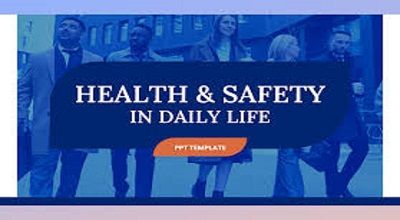Health and safety in daily lifestyle
Maintaining health and safety in daily life is crucial for overall well-being. Here are some general guidelines to help you prioritize health and safety in your lifestyle:
Health:
Balanced Diet:
- Consume a variety of fruits, vegetables, whole grains, lean proteins, and healthy fats.
- Control portion sizes to maintain a healthy weight.
Hydration:
- Drink an adequate amount of water throughout the day to stay hydrated.
Regular Exercise:
- Engage in regular physical activity, including both aerobic exercises and strength training.
- Aim for at least 150 minutes of moderate-intensity exercise per week.
Adequate Sleep:
- Ensure 7-9 hours of quality sleep each night for physical and mental well-being.
Stress Management:
- Practice stress-reducing techniques such as meditation, deep breathing, or yoga.
Regular Health Check-ups:
- Schedule routine health check-ups and screenings to detect and prevent potential health issues.
Limit Substance Use:
- Avoid excessive alcohol consumption and recreational drug use.
Safety:
Home Safety:
- Keep walkways clear of obstacles to prevent falls.
- Install smoke detectors and carbon monoxide detectors in your home.
Road Safety:
- Follow traffic rules and use seat belts while driving.
- Be cautious as a pedestrian and use crosswalks.
Workplace Safety:
- Follow safety protocols and use protective equipment at work.
- Take breaks, and avoid prolonged periods of sitting.
Food Safety:
- Practice proper food handling and storage to prevent foodborne illnesses.
Personal Hygiene:
- Wash your hands regularly to prevent the spread of germs.
- Maintain good personal hygiene practices.
Digital Safety:
- Protect your personal information online and use strong, unique passwords.
- Be mindful of screen time and take breaks to reduce eye strain.
- Emergency Preparedness:
- Know basic first aid and emergency procedures.
- Have emergency contacts readily available.
Sun Safety:
- Use sunscreen and protective clothing to prevent skin damage from UV rays.
Final Words
Remember that health and safety are interconnected, and small, consistent efforts in these areas contribute to a healthier and safer lifestyle. Tailor these guidelines to your specific needs and consult with healthcare professionals when needed.
